The State Herbarium of South Australia’s Plant of the Month for June 2016 is Spyridium phlebophyllum (F.Muell.) F.Muell. (inland spyridium; plant family Rhamnaceae), which occurs in Ikara-Flinders Ranges National Park, DEWNR’s Park of the Month.

Mt Aleck (Elders Ranges) with Wilpena Pound in the background. Photo: P.J. Canty.
Spyridium phlebophyllum is a South Australian endemic shrub, around 1.5 m high, growing on rocky ridges and upper slopes of the southern and northern Flinders Ranges, including Mt Remarkable, the Elder and Gammon Ranges, between Lake Torrens and Lake Frome. The species is associated with quartzite rocks and outcrops. Characteristic are the round leaves with conspicuously raised net-like venation on the upper leaf surface. The lower surface is covered in dense white-grey to rusty hairs. The species received its name on account of its distinctive venation, derived from the Greek words phlebs = vein and phyllon = leaf.
The plant was first described as Trymalium phlebophyllum by Ferdinand von Mueller from specimens he collected during his arduous, lone 6-week-long trip to the Flinders Ranges in spring 1851. Mueller organised this expedition himself, after unsuccessfully lobbying to be included as botanist in several government inland expeditions. He describes the species’ habit as “stately” and writes that it is growing in the “rocky summits of the Elders Ranges and other mountains near Lake Torrens“. The type collection was made in October 1851 from near Kanyaka (rendered “Cudnaka” in Mueller’s time).

Spyridium phebophyllum at Warren Gorge. Inflorescence surrounded by white floral leaves, vegetative leaves with raised veins. Photo: P.J. Lang.
While the scientific description was not published until 1855, Mueller mentions the species name already in his account of the flora and vegetation of the Lake Torrens area, which was published in April 1853 in Hooker‘s Journal of Botany and Kew Garden Miscellany (also republished in German in August 1853). Interestingly, the world-authority on Rhamnaceae, Siegfried Reissek at the Natural History Museum in Vienna, examined Mueller’s collections and described the plant in detail in 1857, noting that it was cultivated in the Vienna Botanic Gardens from seeds sent by Mueller and that it first flowered in 1855, after three years of cultivation, i.e. Mueller must have sent seeds to Vienna in 1852, shortly after his trip.
Since at that time the generic limits of Australian Rhamnaceae had not been finalised, Trymalium phlebophylum was (like many other species in the family) transferred from Trymalium to Spyridium and then to Cryptandra, before being accepted in the current genus. The confusion regarding generic placement of Rhamnaceae species was described in more detail in this journal article (2.3MB PDF).

Spyridium phlebophyllum, large shrub covered with inflorescences surrounded by conspicuous, white floral leaves. Photo: J. Kellermann.
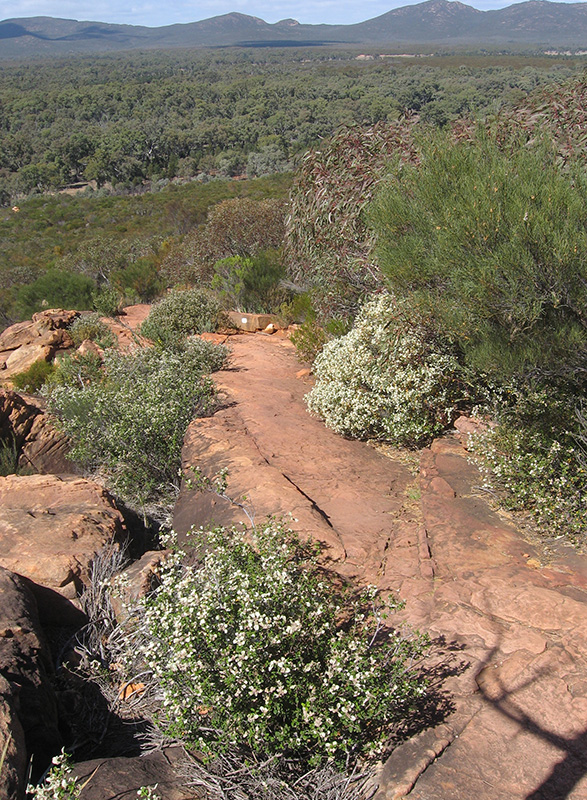
Shrubs of Spyridium phlebophyllum near Wangara Lookout. View into Wilpena Pound. Photo: J. Kellermann.
In its native habitat, Spyridium phlebophyllum is susceptible to browsing by goats, similar to other species of the family, such as Stenanthemum arens in the western Gawler Ranges (as described in this Bushblitz report; 5.8MB PDF).
When you visit the Flinders Ranges next time, why not look out for the species. For example, it can be found near Wanagara Lookout, on the Boom and Bust Hike or on Mount Ohlsen Baggage.

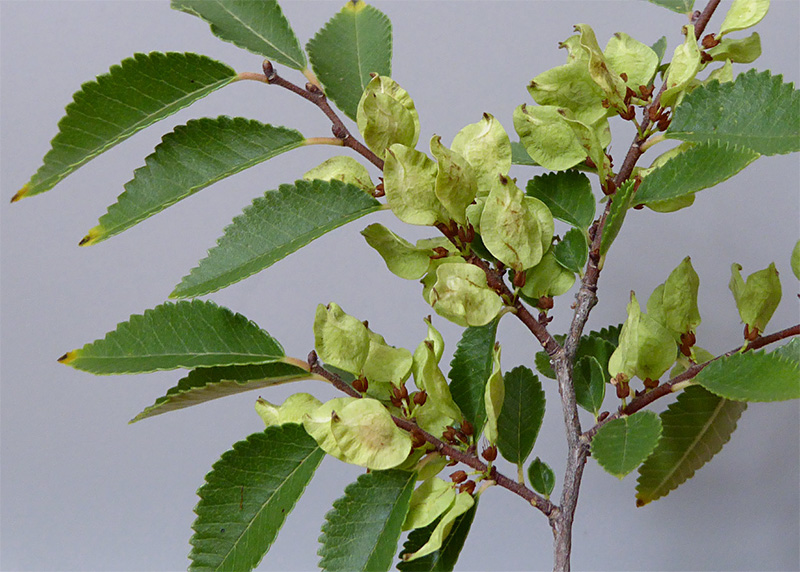




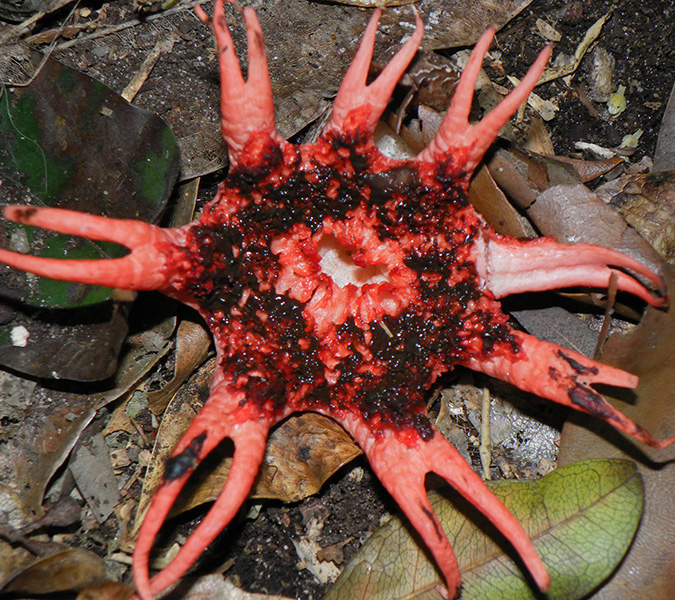
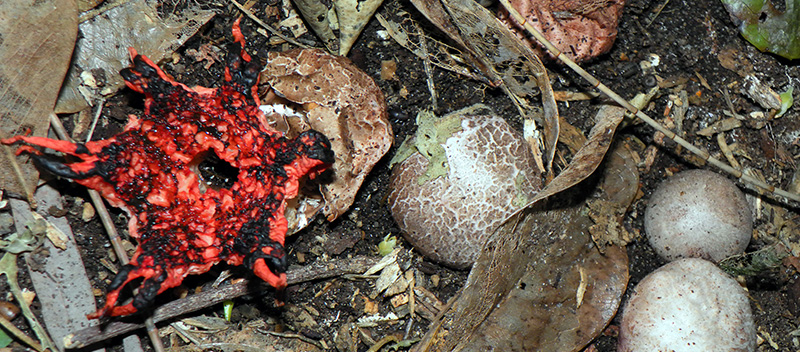

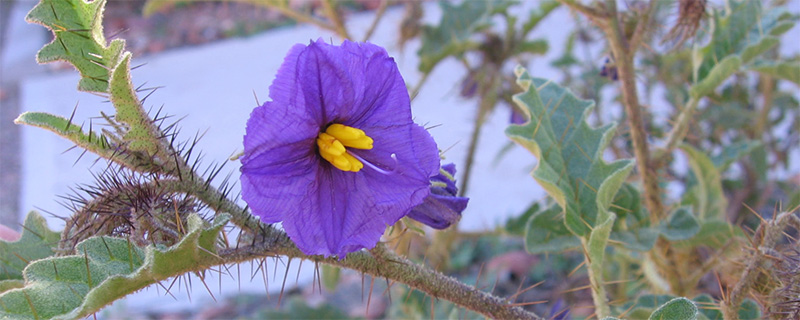
You must be logged in to post a comment.